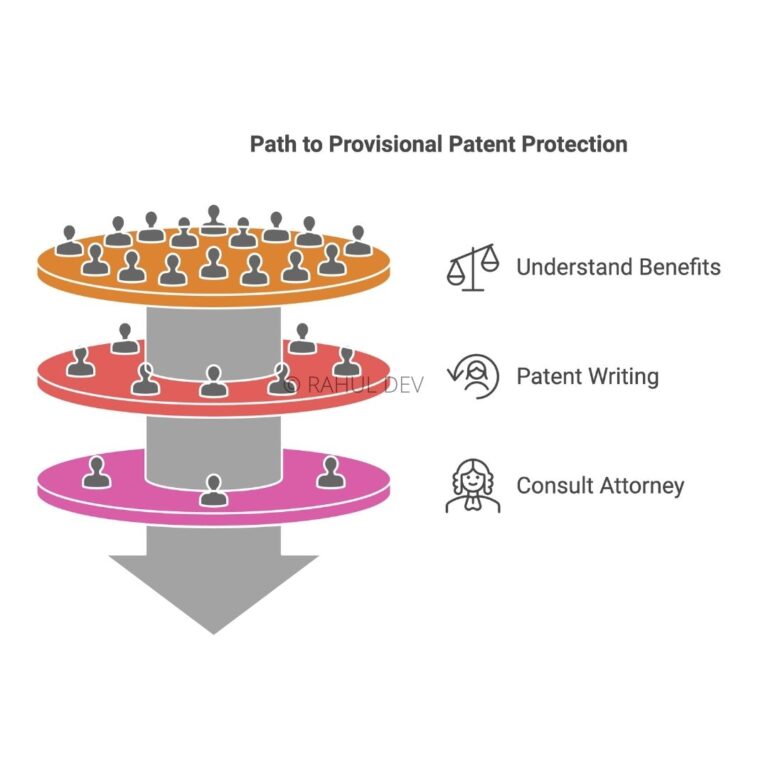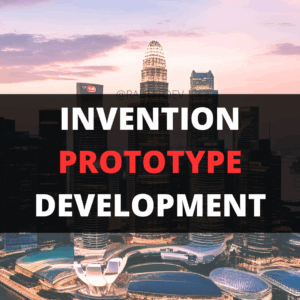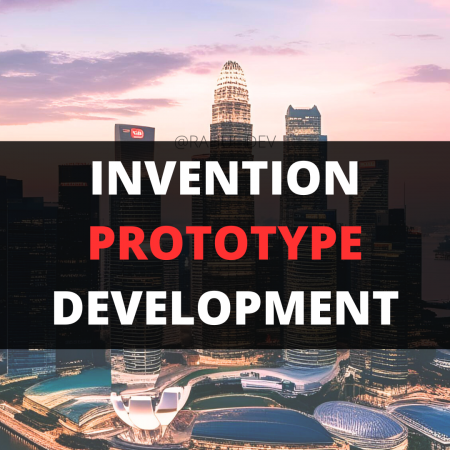Invention Prototyping
Insights by Dr. Rahul Dev

Understand Practical Aspects
Understand the role of prototype designing

Insights by Dr. Rahul Dev

Understand the role of prototype designing

Protect your innovations across multiple countries and create strong patent portfolio to boost business valuation
Local and global brand protection through international trademark registrations
Extensive research and business writing for technical whitepapers and B2B content products
I write this guide for the inventors to design invention prototype and development of invention prototype with international patent filing to achieve global invention protection. The transformation of a unique idea into a tangible product requires creating a prototype. A prototype tests functionality, refines designs, and demonstrates your invention to potential investors or manufacturers. The process involves several stages that demand careful planning and execution.
The prototyping process follows essential steps, based on insights from MarketBlast. The first step requires determining your prototype’s purpose: Proof of Concept, Appearance Model, or Working Prototype. Each type serves distinct functions in the development process. A Proof of Concept demonstrates basic functionality, while an Appearance Model focuses on aesthetics. A Working Prototype provides full functionality for comprehensive testing. The development begins with drawings of your invention from multiple angles. These sketches must include measurements, materials, and functionality details.
This article covers following topics:
Protecting Your Invention Prototype
How I Created a Working Prototype of an Invention
Prototype Checklist to Turn Your Idea into a Product


The security of your intellectual property (IP) demands attention while developing and marketing your invention prototype. The following strategies, informed by USPTO Patent Basics and FindLaw, outline essential protection methods. A provisional patent secures a filing date and provides 12 months to file a non-provisional patent. This cost-effective approach establishes priority while you refine your invention. A preliminary patent search using USPTO’s Patent Public Search tool ensures your invention meets novelty requirements.
The requirement for potential partners, customers, or manufacturers to sign NDAs before reviewing your invention details establishes legal confidentiality protection. These agreements prevent unauthorized disclosure of your concept. The avoidance of public disclosures before filing a patent prevents jeopardizing patent eligibility in many countries. Public disclosures include product releases, publications, or conference presentations. The establishment of confidential relationships with stakeholders minimizes idea theft risks. The comprehensive patent process includes several critical steps. Preliminary search of USPTO and WIPO databases helps check for prior art. Hiring a registered patent attorney or agent drafts and prosecutes your application. You must choose between utility, design, or plant patents based on your invention category. The application requirements include forms, fees, specifications, drawings, and an oath/declaration.
The journey of creating a working invention prototype varies by invention type. The insights from successful industry examples illustrate common approaches and benefits. The selection of prototyping technology requires matching methods to invention complexity and material requirements. Options like 3D printing, SLS, and LOM offer different advantages for specific applications depending on your needs. The invention prototyping method selection impacts development timeline, budget, and final product quality. The appropriate technology choice depends on your invention’s specific requirements and constraints during development. Also, testing through invention prototypes identifies design flaws early in development before major investments. This approach saves time and money before committing to production of the final product. The iterative process allows refinement based on real-world testing and feedback from potential users. The improvements from each prototype version contribute to a superior final product with fewer post-launch issues or corrections needed.
The financial efficiency improves with rapid prototyping technologies compared to traditional methods for most inventions. The cost reductions enable more comprehensive testing within budget constraints during development. The efficiency gains prove especially valuable for complex designs requiring multiple refinements before finalization. The investment in proper prototyping typically yields returns through reduced manufacturing problems and market-ready products as a part of best practices for invention prototype development.
The transformation of an idea into a marketable product requires following a structured checklist. The comprehensive guide below, adapted from Inventor Resource, ensures all critical steps receive attention during development. The documentation of your idea helps focus initial thoughts and provides a reference point for development. This written record establishes the foundation for your invention process. The analysis includes defining the problem-solving aspects and target audience for your invention. Writing down these thoughts creates clarity about your invention’s purpose and market potential. The detailed patent specification establishes your idea’s practicality and feasibility for development. This document serves as a blueprint for development and testing throughout the creation process.
The research identifies differences between your concept and existing solutions in the marketplace. Online searches, retail store visits, and personal contacts provide valuable insights about potential interested parties. The invention prototype evaluation includes manufacturing costs, market pricing, and potential profits for your product. Companies can assist with this analysis, or you may complete it independently to gain clarity on problems and success factors. The physical model helps identify early glitches and prepares for patent application submission. A functional invention prototype demonstrates feasibility and supports IP protection efforts during patent filing. The protection strategies include patents, copyrights, or NDAs for your invention. Non-disclosure agreements facilitate sharing information while maintaining legal protection for your intellectual property. This critical decision determines your subsequent steps in bringing your product to market. Licensing leads to preparing pitches and negotiating agreements, while business creation follows planning and funding routes. The invention prototype presentation includes positive information gathered from earlier development stages. A compelling pitch increases chances of securing a favorable licensing agreement with manufacturers.
The licensing agreements for making money after developing invention prototype require review by a solicitor to avoid misunderstandings about rights and royalties. Clear terms protect your interests throughout the licensing relationship and ensure proper compensation. The documentation involves accountants and business partners as necessary for success. Comprehensive planning establishes the foundation for successful commercialization of your invention.
The research builds on initial findings, potentially with assistance from specialist companies for market analysis. Detailed market analysis validates demand and identifies competitive positioning for your product. The invention prototype funding process may begin before market research completion for business creation. The comprehensive approach covers all aspects and explores multiple funding sources, including personal investment. The invention prototype marketing agreements must provide ultimate authority in product decisions to maintain quality. This control ensures quality and alignment with your original vision throughout manufacturing. The participation prevents incorrect sales decisions from affecting your product’s success. Your involvement in marketing strategies maintains brand integrity and market positioning in competitive markets.

As a business coach and thought leader, I cannot emphasize enough the importance of innovation, new software patents, mobile apps, and patents for tech companies, startups, and entrepreneurs. The world is rapidly evolving, and staying ahead of the curve is vital for success. Embracing technological advancements such as blockchain and AI can unlock unprecedented opportunities, streamline operations, and propel businesses into the future with competitive valuation via intangible assets.
Click Here for AI Startup Valuation Guide.
For instance, blockchain technology can revolutionize supply chain management and secure data sharing wherein innovative business models are explained to the audience via technical whitepapers, while AI can automate and optimize decision-making processes. Mobile apps are no longer just a luxury; they have become essential tools for engaging customers and offering personalized experiences. Furthermore, securing digital innovation patents is crucial for protecting intellectual property, fostering innovation, and maintaining a competitive edge. By investing in these areas, businesses can position themselves as industry pioneers and pave the way for a prosperous future after thoroughly conducting the due diligence and reviewing the legal opinion letters, which in case of digital assets can assist in determining the tokens as utility assets or coins as utility tokens before listing the assets at an exchange.
Our team of advanced patent attorneys assists clients with patent searches, drafting patent applications, and patent (intellectual property) agreements, including licensing and non-disclosure agreements. Advocate Rahul Dev is a Patent Attorney & International Business Lawyer practicing Technology, Intellectual Property & Corporate Laws. He is reachable at rd (at) patentbusinesslawyer (dot) com & @rdpatentlawyer on Twitter.
Quoted in and contributed to 50+ national & international publications (Bloomberg, FirstPost, SwissInfo, Outlook Money, Yahoo News, Times of India, Economic Times, Business Standard, Quartz, Global Legal Post, International Bar Association, LawAsia, BioSpectrum Asia, Digital News Asia, e27, Leaders Speak, Entrepreneur India, VCCircle, AutoTech).
Regularly invited to speak at international & national platforms (conferences, TV channels, seminars, corporate trainings, government workshops) on technology, patents, business strategy, legal developments, leadership & management.
Working closely with patent attorneys along with international law firms with significant experience with lawyers in Asia Pacific providing services to clients in US and Europe. Flagship services include international patent and trademark filings, patent services in India and global patent consulting services.
Global Blockchain Lawyers (www.GlobalBlockchainLawyers.com) is a digital platform to discuss legal issues, latest technology and legal developments, and applicable laws in the dynamic field of Digital Currency, Blockchain, Bitcoin, Cryptocurrency and raising capital through the sale of tokens or coins (ICO or Initial Coin Offerings).
Blockchain ecosystem in India is evolving at a rapid pace and a proactive legal approach is required by blockchain lawyers in India to understand the complex nature of applicable laws and regulations.